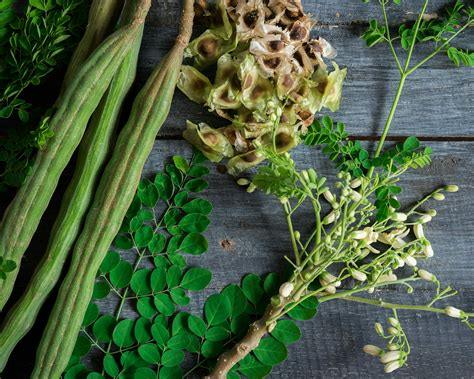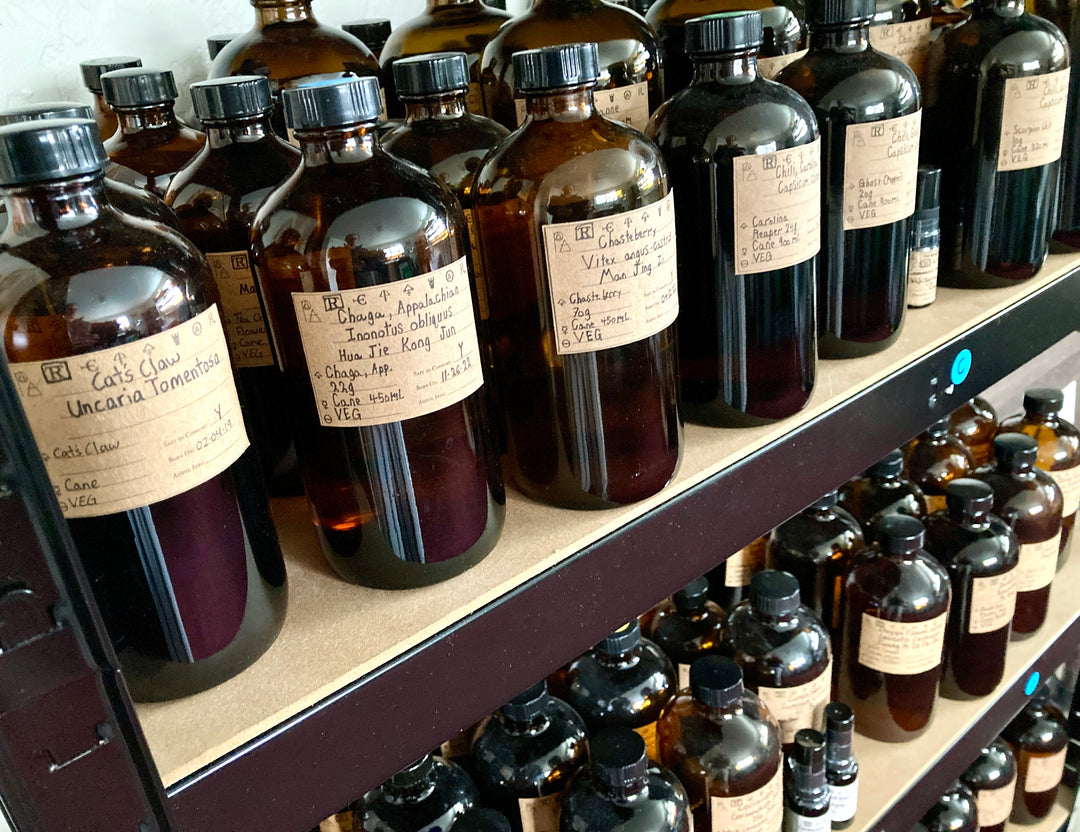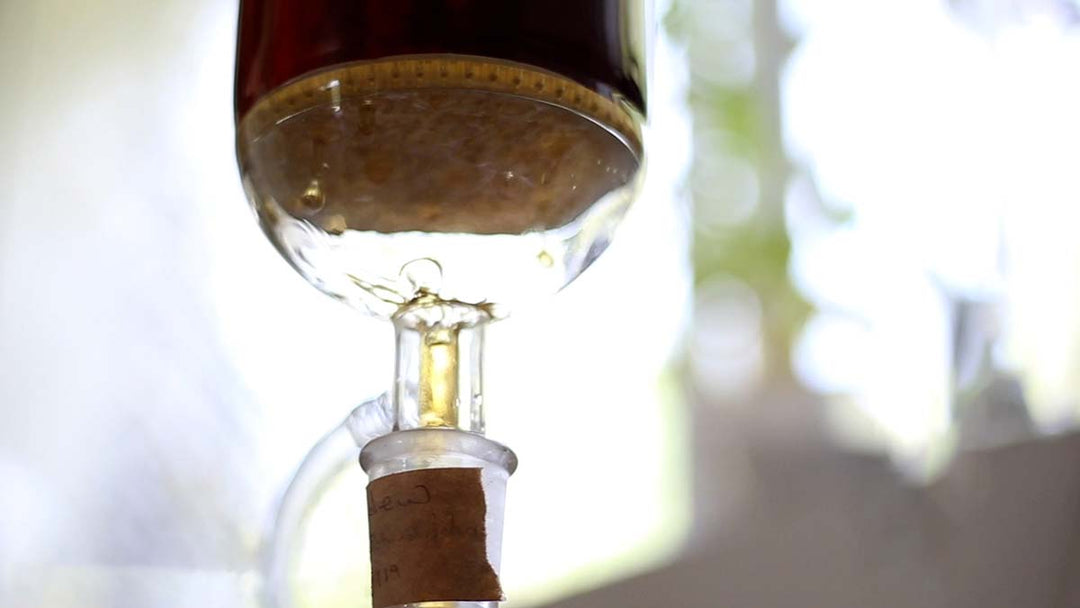Written by Norianna Diesel

Introduction:
On the face of our beautiful planet, there exists a tree that has captivated ancient civilizations, intrigued modern scientists, and continues to astound us to this day with its remarkable properties. Moringa oleifera, often referred to as the "Miracle Tree," has a rich history dating back thousands of years.
There are 13 species in the plant family Moringaceae, yet the most globally cultivated form is Moringa oleifera, and it is native to the foothills of the Himalayan Mountains in northwestern India.
The Moringa tree thrives in dry, hot climates, is drought-resistant, and also happens to grow very quickly from either seeds or branch cuttings. The leaves, fruits, immature seed pods, and flowers are all edible, and very rich in nutrition. Because of its ability to grow quickly in harsher climates, its superior nutrition, as well as its rich medicinal use, this tree has rightfully earned its nickname as the "Miracle Tree."
Traditional Uses of Moringa Oleifera in India:
Culinary Uses: Various parts of the Moringa tree are utilized in Indian cuisine. The "drumstick pods," known as sahijan ki phalli, or "moringa pods," are a popular ingredient in curries, stews, and soups. The tender leaves, known as sahijan ki patti, are used as a vegetable and added to dishes like dal (lentil soup), or saag (greens). The flowers of the Moringa tree are also consumed, either fried, or used in traditional recipes.
Nutritional Supplement: Moringa leaves are highly nutritious, and are often used as a dietary supplement in India. Moringa leaf powder, known as sahijan ki powder, or "drumstick leaf powder," is a common addition to smoothies, juices, and herbal teas to enhance their nutritional content.
Ayurvedic Medicine: In Ayurveda, the traditional system of medicine in India, Moringa is highly valued for its medicinal properties. Different parts of the tree, including the leaves, bark, flowers, and roots, are used in various Ayurvedic preparations for a wide range of ailments. Moringa has historically been used for its rejuvenating properties, to promote digestion, boost immunity, and support overall well-being.
Traditional Remedies: Moringa has been traditionally used in India for its therapeutic benefits. It has historically been employed to manage conditions such as diabetes, high blood pressure, arthritis, digestive disorders, respiratory issues, and skin problems. The various parts of the tree are prepared as decoctions, poultices, pastes, or oils for external and internal applications.
Water Purification: Moringa seeds have natural coagulant properties, and crushed seeds or seed extracts are sometimes used in rural areas of India for water purification. The seeds can help clarify turbid water by aiding in the removal of impurities and suspended particles.
India has been utilizing this tree for a wide variety of purposes for thousands of years, and only recently in the last few hundred years was Moringa oleifera discovered and used in the West.
Discovery of Moringa in the West:
The exact timeline of when the West first discovered Moringa can be challenging to pinpoint precisely, but some of the earliest documentation suggests that Moringa seeds were brought to Europe in the 19th century as a source of oil, mainly for lubrication. It was only later in the 20th century that research really began, and since the 1970s there has been a lot of research conducted on on Moringa oleifera.

Medicinal Uses Of Moringa Oleifera:
The roots, leaves, gum, flowers, and seeds contain: nitrile (blood pressure lowering effects), mustard oil glycosides (anti-inflammatory effects), and thiocarbamate glycosides (anti-oxidants). Collectively these have been shown to be part of the diuretic, cholesterol-lowering, anti-ulcer, hepatoprotective, and cardiovascular protective properties of the tree.
In some traditional practices, the roots are believed to possess astringent properties that may help alleviate diarrhea symptoms by reducing intestinal motility and promoting firmer stools.
Pterygospermin is a compound found in Moringa oleifera, particularly in its seeds. Studies have shown that pterygospermin exhibits broad-spectrum antimicrobial activity against various pathogens, including bacteria and fungi. It has been found to inhibit the growth of certain bacteria such as Escherichia coli (E. coli), Salmonella, Staphylococcus aureus (S. aureus), and Pseudomonas aeruginosa, as well as several fungal strains!
A growing body of evidence is showing that Moringa can also help fight inflammation in the body. Some of the ways Moringa can help inflammation in the body are due to its high levels of antioxidants, its anti-inflammatory compounds, its ability to regulate immune response by regulating the production of cytokines, and its ability to inhibit the nuclear factor-kappa B (NF-κB) pathway, which is a key regulator of the inflammatory response.
Moringa has been historically used for:
-
inflammation-related diseases
-
anemia
-
cancer
-
diabetes
-
anemia
-
low energy and fatigue
-
arthritis and other joint pain, such as rheumatism
-
allergies and asthma
-
constipation, stomach pains, and and diarrhea
-
epilepsy
-
stomach and intestinal ulcers or spasms
-
chronic headaches
-
heart problems, including high blood pressure
-
kidney stones
-
fluid retention
-
thyroid disorders
-
low sex drive
-
bacterial, fungal, viral and parasitic infections
It can also help lower blood sugar levels, help increase overall immune system functionality, protect skin and hair, protect the liver, improve eye health, enhance digestion, and help increase ones energy levels.

Nutritional Properties of Moringa:
As we have already gathered, every aspect of the Moringa tree can be used in some beneficial way. Not only is this tree an amazing ally when it comes to balancing out various health ailments, it can serve as a kind of one stop shop when it comes to your daily nutritional requirements.
Moringa oleifera contains such a wide variety of vitamins, minerals, amino acids, and more, this makes it arguably one of the world's most top-notch superfoods.
Moringa oleifera contains:
Vitamins:
Vitamin A (beta-carotene)
Vitamin B1 (thiamin)
Vitamin B2 (riboflavin)
Vitamin B3 (niacin)
Vitamin B6
Folate (vitamin B9)
Vitamin C
Vitamin E
Vitamin K
Minerals:
Calcium
Iron
Magnesium
Phosphorus
Potassium
Zinc
Copper
Manganese
Selenium
Amino Acids (Protein Building Blocks):
Moringa leaves contain all nine essential amino acids, which are the building blocks of proteins that our bodies cannot synthesize on their own. The essential amino acids found in Moringa include:
Isoleucine
Leucine
Lysine
Methionine
Phenylalanine
Threonine
Tryptophan
Valine
Histidine
Antioxidants:
Moringa is rich in various antioxidants including flavonoids (quercetin, kaempferol, rutin), phenolic acids (caffeic acid, chlorogenic acid), and other polyphenols. These antioxidants help protect the body against oxidative stress and free radical damage.
Other Nutrients:
Dietary fiber
Essential fatty acids (omega-3 and omega-6)
Plant sterols
Plant pigments (chlorophyll, carotenoids)
Disease-preventing phytonutrients: flavonoids, glucosides, glucosinolates, zeatin, quercetin, beta-sitosterol, caffeoylquinic acid, and kaempferol

Other Awesome Facts about the "Miracle Tree:"
Water purification abilities: Studies have demonstrated the effectiveness of Moringa seeds in removing cadmium from water and other aqueous solutions. The proteins and peptides in Moringa seeds form complexes with cadmium ions, leading to their removal from the water through sedimentation or filtration.
Oil benefits: The seeds of the Moringa tree also produce an amazing oil that can be used for culinary purposes, as well as an incredible nutrient-rich skin, hair, and massage oil. The oil has also historically been used for wound healing as well as certain skin conditions. As with any oil, it it important to use pure, cold-pressed, and the highest quality, to maximize its potential benefits.
Super fast growing: It can grow up to 3 meters (10 feet) in just one year, making it one of the fastest-growing trees on the planet.
Animal feed: Moringa leaves and seeds are highly nutritious, and are commonly used as animal feed. They provide a valuable source of protein, vitamins, and minerals for livestock and poultry.
Soil Improvement: Moringa has beneficial effects on soil health. Its deep root system can help prevent soil erosion, and when the leaves drop and decompose, they enrich the soil with organic matter, nutrients, and improve its fertility.
This tree is an excellent choice for non-profits working to end hunger in drought stricken countries. Some non-profits that highlight the Moringa tree front and center in their rehabilitation efforts are: The Trees for Life Moringa Project, The Moringa Initiative, and The Moringa Project.

We here at the Phoenix Aurelius Research Academy have worked with Moringa quite extensively, with Phoenix creating an incredible Spagyric Clyssus of the full plant. Check out this video explaining what a Spagyric Clyssus is, and why our Moringa Clyssus is a unique and necessary addition to your home apothecary.
Disclaimer: The information provided in this article is for educational purposes only and should not be used to diagnose or cure disease
Resources:








